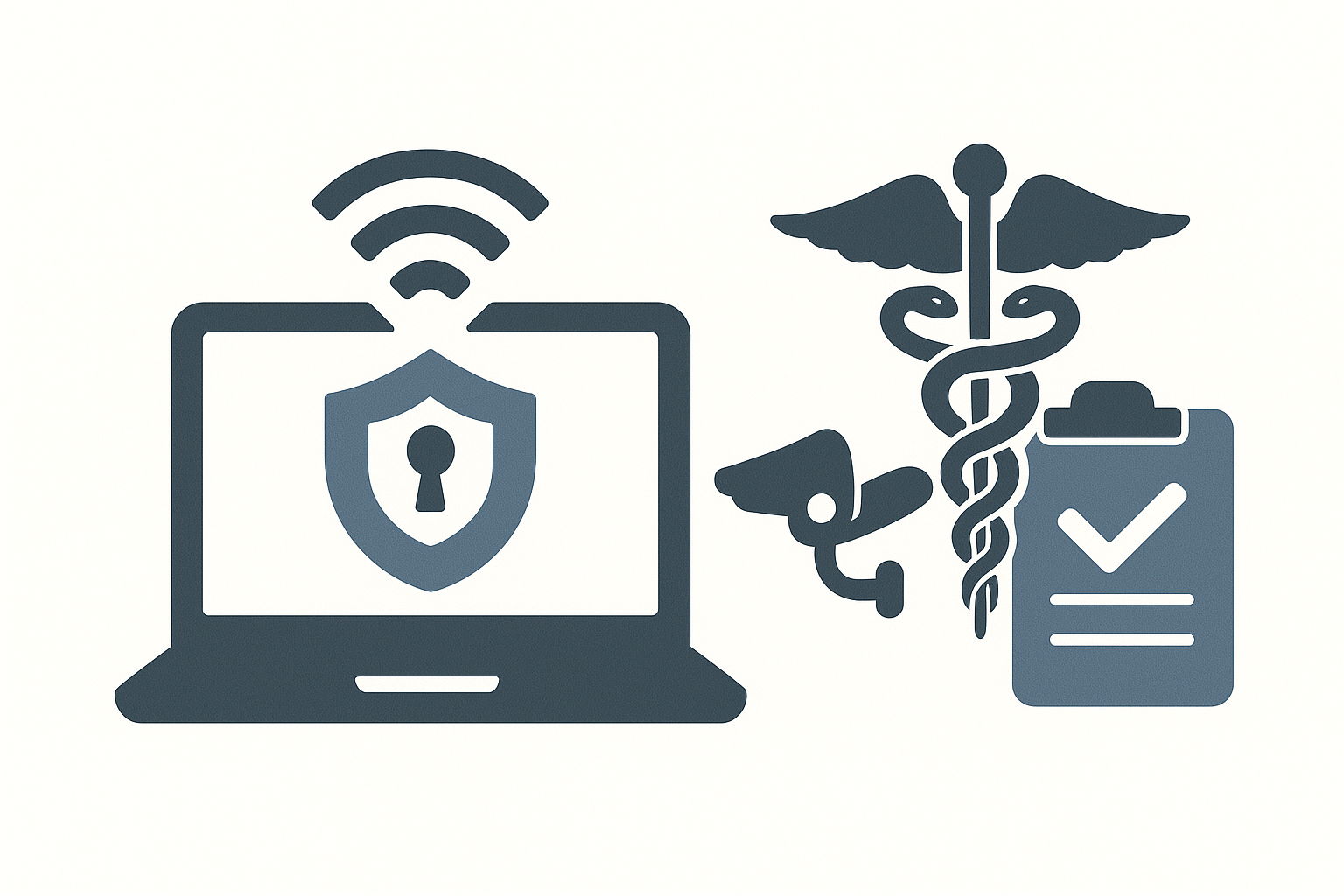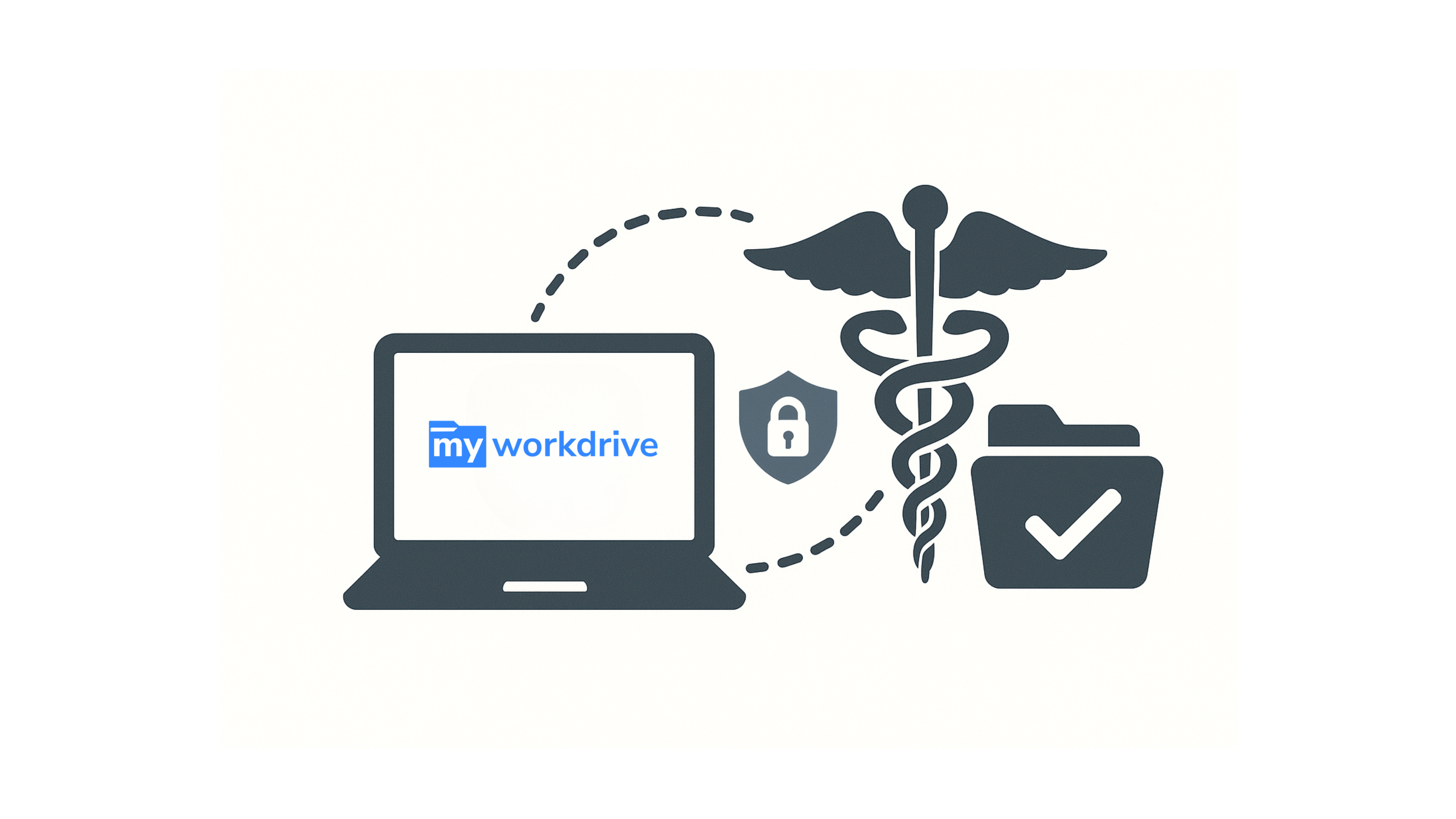VPN HIPAA Compliance: Why VPNs Put PHI at Risk and the VPN-Free Alternative

Introduction
HIPAA requires technical safeguards for access control, authentication, integrity, transmission security, and audit controls under 45 CFR 164.312. The healthcare industry is a rapidly evolving sector that increasingly depends on digital solutions and must address HIPAA requirements to ensure the security and privacy of patient information.
Healthcare IT must protect PHI in transit, restrict access to the minimum necessary, and keep tamper-evident audit trails. Proper encryption and data encryption are essential for protecting the most sensitive data, such as PHI, in the healthcare industry. These measures help safeguard sensitive data and the most sensitive data from unauthorized access.
After implementing audit trails, organizations must ensure all the safeguards required by HIPAA, including the breach notification rule, are in place to maintain compliance and protect sensitive data.
Traditional remote access has relied on VPNs to extend network reach for clinicians and staff. That model is now risky and inefficient for HIPAA programs. Staying HIPAA compliant is an ongoing process that requires regular review of security measures and adherence to all HIPAA requirements.
Why VPNs Fail HIPAA’s Modern Compliance Standards

-
Broad network exposure. A VPN places remote devices on internal subnets. PHI becomes reachable beyond the specific apps or shares users need.
-
Credential and malware risk. Stolen passwords, token reuse, and unmanaged endpoints can enable lateral movement. Malware can traverse the tunnel. Traditional VPN setups often lack robust user access controls and do not require multi factor authentication, increasing the risk of unauthorized access.
-
Lack of granular control. VPNs expose networks, not files. Least-privilege and “minimum necessary” access are hard to enforce at the data layer.
-
Insufficient audit detail. VPN logs show tunnel events and IPs. HIPAA requires file-level access and activity records, not only session start and stop, and comprehensive audit logging is often missing.
-
Operational drag. Client installs, split-tunnel rules, certificate lifecycle, and driver updates increase support load. Latency and packet loss degrade user experience. Remote workers using personal devices face additional challenges, as VPNs often lack the necessary security features and other security measures to properly secure these endpoints.
The Compliance Gap: HIPAA Security Rule, Security and Audit Deficiencies in VPNs
-
No contextual access policies. Network admission alone does not evaluate device health, location, or user risk per session.
-
No session-level DLP. VPNs cannot natively watermark, block download, or prevent copy-paste within sensitive sessions.
-
No file-level tracking. HIPAA programs need who opened, viewed, edited, or downloaded each file. Tunnel logs do not satisfy this, and VPNs lack mechanisms to maintain data integrity or apply encryption protocols to protect sensitive information at the file level.
-
Violates “minimum necessary.” A tunnel grants network reach to many systems. Data-level authorization is not enforced by the VPN, and there is no support for granular access controls or integrity controls to restrict and monitor ePHI access as required by HIPAA.
-
Admin burden and patching. Gateways and clients require constant updates for CVEs. Each endpoint increases attack surface and audit scope.
VPNs lack the advanced security tools, such as robust encryption protocols, granular access controls, and integrity controls, that are required for comprehensive HIPAA compliance.
Business Associate Agreements (BAAs) and Third-Party Access
Business Associate Agreements (BAAs) are a foundational requirement for HIPAA compliance whenever a covered entity works with third parties that may access, transmit, or store electronic protected health information(ePHI). Under HIPAA regulations, a business associate is any organization or individual, outside of the covered entity’s workforce, that performs services involving protected health information on behalf of the covered entity. This includes virtual private network (VPN) providers if their services are used to facilitate remote access to PHI.
When a healthcare organization or covered entity engages a VPN provider or any other third-party vendor to handle ePHI, a BAA must be executed before any protected health information is shared or transmitted. The BAA outlines the responsibilities of both the covered entity and the business associate to safeguard ePHI, including requirements for security measures, breach notification, and compliance with the HIPAA Security Rule.
Without a valid BAA in place, both the covered entity and the business associate risk significant HIPAA violations and potential data breaches. The agreement ensures that the VPN provider is contractually obligated to implement appropriate safeguards, restrict unauthorized access, and report any security incidents involving protected health information. This legal framework is essential for maintaining HIPAA compliance and protecting sensitive patient data when leveraging third-party services for secure remote access.
Healthcare organizations must carefully vet VPN providers and other vendors, ensuring that business associate agreements are comprehensive and up to date. This not only fulfills regulatory requirements but also strengthens the overall security posture and accountability for all parties handling protected health information ePHI.
HIPAA-Compliant Access Without a VPN: The MyWorkDrive Approach

-
Architecture. Secure HTTPS access to files without network tunnels. Covered entities, healthcare providers, and healthcare professionals can gain access to sensitive health data securely, reaching only approved shares through an application gateway on port 443.
-
Identity. Native integration with Active Directory or Entra ID. Supports SSO and MFA. Honors existing groups and policies.
-
Authorization. Enforces NTFS permissions directly on existing file shares. Helps covered entities and the healthcare team achieve HIPAA compliance by enforcing strict access controls. No data migration or replication.
-
DLP controls. Optional read-only mode, disable download, print, and copy. Dynamic watermarking for sensitive documents.
-
Collaboration. Document co-authoring via Office Online or OnlyOffice while data stays in place.
-
Auditing. Every file action is logged for compliance review and SIEM ingestion.
-
Security rule alignment. Supports HIPAA Security Rule safeguards for access control, integrity, transmission security, and audit controls when configured with appropriate policies, helping protect patient information and safeguard protected health information (PHI).
-
Broad storage support. Supports on-premises, hybrid, and secure storage and access in cloud environments.
Technical Advantages Over VPNs
-
Zero network exposure. Inbound 443 only through a reverse proxy design. No flat network access for remote users.
-
No persistent tunnels. Per-request authorization to specific files and folders.
-
Centralized logging. Unified audit of PHI access with user, file, action, device, and time.
-
Encryption and crypto. AES-256 with FIPS 140-2 compliant algorithms and modules. TLS protects data in transit, using strong encryption to make data unreadable during internet traffic transmission.
-
Data residency. Keep PHI on existing storage to meet locality requirements.
-
Broad storage support. Works with on-prem SMB shares, Azure File Shares, Azure Blob (Data Lake), and S3-compatible storage. When working with business associates or third-party vendors, ensure a business associate agreement is in place to maintain HIPAA compliance.
-
MyWorkDrive is a fully HIPAA compliant solution, providing a secure alternative to traditional VPNs. While some VPN HIPAA compliant options exist, such as NordLayer HIPAA compliant, MyWorkDrive offers a streamlined approach designed specifically for healthcare data security and compliance.
-
These features support health insurance portability, uphold the requirements of the Accountability Act, and ensure HIPAA privacy. For best practices, organizations should use a HIPAA compliance checklist and implement robust policies and procedures to maintain ongoing compliance.
Conclusion
VPNs are a legacy approach for PHI. They expand attack surface, lack data-level controls, and fall short on HIPAA-grade auditing. MyWorkDrive delivers remote file access without a VPN. It limits exposure to approved files, enforces NTFS permissions, adds DLP and watermarking, and records complete audit trails. For healthcare organizations, it is the simpler, more secure, and compliant path to provide remote access to PHI without the risk and overhead of VPNs.
FAQ
Are VPNs HIPAA compliant?
HIPAA does not certify products. A VPN can be used only if your controls meet the Security Rule, but VPNs often fail to enforce least-privilege and file-level auditing required for PHI.
Does HIPAA require a VPN for remote access?
No. HIPAA requires safeguards under 45 CFR 164.312 for access control, transmission security, integrity, and audit controls. A VPN is optional and often suboptimal.
What are the main VPN HIPAA compliance risks?
Broad network exposure, unmanaged endpoints, credential reuse, malware traversal, weak MFA adoption, and insufficient file-level audit logs.
What makes a VPN “HIPAA compliant”?
Strong MFA, segmentation, device checks, FIPS-validated crypto, detailed audit logs, least-privilege access, continuous monitoring, and a BAA if the vendor can access or process ePHI.
Do I need a BAA with my VPN provider?
Yes if the provider can access, transmit, or store ePHI or encryption keys. If they act only as a conduit with no access, the conduit exception may apply. Confirm with counsel.
How does HIPAA define required audit logs?
Record who did what and when: user, file, action (view, edit, download), timestamp, source IP or device, and success or failure. Retain and route to a SIEM.
How does MyWorkDrive enable HIPAA-compliant access without a VPN?
Application-layer HTTPS on port 443, AD or Entra ID SSO with MFA, NTFS-based authorization, DLP controls (read-only, disable download, watermark), and full file-level auditing.
How is “minimum necessary” enforced without a VPN?
Publish only approved shares, enforce NTFS permissions, and apply policy controls like read-only and download blocking to restrict PHI exposure.
What encryption does MyWorkDrive use?
TLS protects data in transit with strong ciphers. AES-256 is supported; use FIPS 140-2 validated modules where available. Data at rest remains on your storage.
Can MyWorkDrive keep PHI in-country and on-premises?
Yes. It accesses existing SMB shares, Azure Files, or Azure Blob without migration, supporting data residency strategies.
Can MyWorkDrive feed our SIEM for HIPAA audits?
Yes. It exports granular file events that you can ingest into your SIEM.
How do we phase out VPNs safely?
Deploy MyWorkDrive behind a reverse proxy on 443, integrate identity (AD/Entra ID), publish required shares, enable MFA and DLP, pilot with a user group, then decommission tunnels.
Is MyWorkDrive zero-trust aligned?
Yes. It verifies identity and context per request and grants access to specific files and folders, not the flat network.
Does MyWorkDrive sign BAAs?
Contact MyWorkDrive to execute a BAA as part of your HIPAA contracting process.